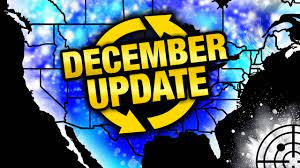A polar vortex is a large area of low-pressure and cold air surrounding the Earth’s poles. It’s a phenomenon that exists near the poles all year round, but it becomes more defined and expands during the winter months due to the increased temperature contrast between the polar regions and the mid-latitudes (like the United States and Europe).
Here’s a more detailed breakdown:
- Structure and Behavior: The polar vortex is not a single, static storm. Instead, it’s a large, swirling pool of extremely cold air that can have multiple centers. In the Northern Hemisphere, it’s typically located over Canada and the Arctic.
- Winter Influence: During winter, the vortex expands, sending cold air southward with the jet stream. This can result in cold snaps or prolonged periods of low temperatures in the United States, Europe, and Asia.
- Variability: The strength and position of the polar vortex vary from year to year. When the vortex is strong and stable, it keeps the coldest air locked up in the Arctic. But when it’s weak, which can be influenced by various climatic factors like sea surface temperatures, it can split or be displaced, causing cold Arctic air to spill southward.
- Climate Change Effects: There’s ongoing research into how climate change is impacting the polar vortex. Some studies suggest that a warming Arctic can lead to a weaker polar vortex, potentially resulting in more frequent cold outbreaks in the mid-latitudes.
- Not a Storm: It’s important to note that the polar vortex itself is not a storm or a weather front. It’s a broader climatic feature that influences weather patterns.
The polar vortex is a key driver of winter weather in the Northern Hemisphere, particularly influencing extreme cold events. Its behavior is complex and influenced by a variety of atmospheric and oceanic conditions.
POW Ponder on Weather also calls out the very low snowpack in North America right now.
